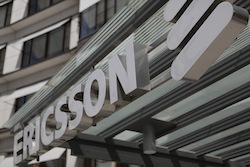The number of M2M connections is set to quadruple within the next five years, with GSM technology likely to dominate in the short term, new research from Ericsson has found.
The vendor’s quarterly mobility report examined the M2M sector for the first time and found 64 percent of devices are GSM only. Ericsson said it would be 2016 when 3G and 4G LTE technology overtakes 2G.
There are currently 200m active cellular M2M devices. Currently LTE device penetration is only one percent and is expected to hit 20 percent by 2019. Between them, WCDMA and HSPA have a 35 percent share of the M2M market.
Ericsson said 2G was popular because the cheapest modules were GSM compatible, M2M is not reliant on high speeds and the applications have long life cycles. This is why fleet management services and smart meters rely on the technology, it added.
Ericsson’s Patrick Cerwall, Head of Strategic Marketing and Intelligence, said this popularity could see 2G technology outlast that of 3G. He said: “It’s a factor that could influence [the decision to change network technology]. If you have a lot of 2G M2M devices, they have a long life cycle and you don’t necessarily need to change that model.”
Elsewhere in the report, Ericsson said the gap between 4G LTE markets will remain wide. By 2019, LTE will cover 80 percent of Europe’s population but only 30 percent of the population will sign up to a next generation contract. This contrasts sharply to North America, where 85 percent of the population will be on a 4G LTE contract by 2019.
Cerwall said there was less of an incentive for European customers to trade up to 4G because of the robustness of existing 3G networks.
He added he was surprised European operators were not doing more to encourage consumers to trade up to 4G LTE. He said: “It’s a little bit strange that they are not trying to drive up usage to 4G. They could do more of that.
“But Europe is a much more fragmented market. In the United States there are four big players but in Europe it’s a very much regional market.”
Other findings in the report were the prediction that mobile subscriptions will overtake the world’s population in 2015. Mobile subscriptions grew by seven percent during the past year, with 120 million net additions in the first quarter. By 2019, there will be 7.6 billion mobile broadband subscriptions, 80 percent of total mobile subscriptions.
Ericsson said it will take two years for smartphone subscriptions to overtake those of feature phones. By 2019, there will be 765 million smartphone subscriptions, exceeding the continent’s population.
Rima Qureshi, Senior Vice President and Ericsson’s Chief Strategy Officer, said: “The growth and the evolution in M2M and the 10-fold growth in mobile data traffic strengthen the emphasis on network performance, handling complexity and maximizing the user experience. This in turn puts even higher requirements across the networks and the operations and business support systems of the future.”



